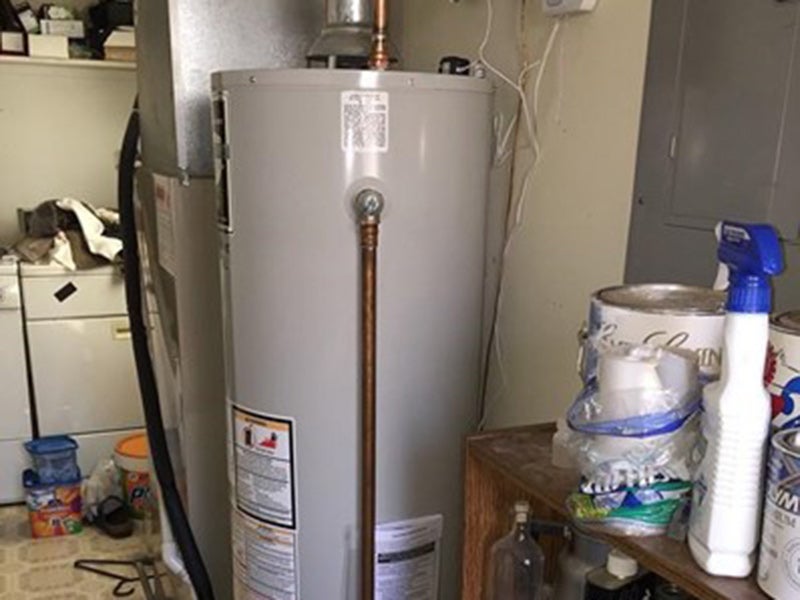They are making a number of great pointers regarding Water Heater Maintenance Tips You Can't Afford to Forget overall in this article down the page.
:max_bytes(150000):strip_icc()/reasons-gas-water-heater-not-working-5212987-hero-fe6b82a59053421c88b7d13ea311d3c5.jpg)
Warm water is necessary for daily comfort, whether it's for a revitalizing shower or cleaning recipes. To ensure your warm water system runs effectively and lasts longer, routine maintenance is key. This write-up gives useful tips and understandings on how to maintain your home's warm water system to avoid interruptions and pricey repair services.
Intro
Preserving your home's hot water system may appear difficult, yet with a few straightforward steps, you can guarantee it operates efficiently for years to find. This overview covers everything from comprehending your warm water system to DIY maintenance pointers and recognizing when to hire expert aid.
Significance of Keeping Your Warm Water System
Normal maintenance not only expands the lifespan of your hot water system however also guarantees it runs efficiently. Overlooking upkeep can lead to lowered efficiency, greater power bills, and even early failing of the system.
Indicators Your Hot Water System Requirements Maintenance
Understanding when your hot water system requires interest can protect against significant issues. Watch out for indicators such as irregular water temperature level, weird sounds from the heater, or rusty water.
Understanding Your Warm Water System
Prior to diving right into upkeep jobs, it's handy to understand the basic components of your hot water system. Normally, this consists of the hot water heater itself, pipes, anode rods, and temperature level controls.
Month-to-month Upkeep Tasks
Regular monthly checks can assist capture small issues before they escalate.
Flushing the Water Heater
Flushing your water heater removes sediment buildup, improving performance and extending its life.
Checking and Replacing Anode Rods
Anode rods protect against deterioration inside the container. Evaluating and changing them when broken is critical.
Evaluating and Readjusting Temperature Level Setups
Changing the temperature setups guarantees optimal performance and safety and security.
DIY Tips for Maintenance
You can execute several maintenance jobs yourself to keep your warm water system in leading condition.
Checking for Leaks
Frequently examine pipelines and links for leaks, as these can result in water damage and greater bills.
Testing Stress Relief Valves
Evaluating the stress safety valve ensures it operates appropriately and stops extreme stress accumulation.
Insulating Pipelines
Shielding hot water pipes minimizes warm loss and can save power.
When to Call a Specialist
While do it yourself upkeep is beneficial, some issues need expert competence.
Complex Issues Requiring Expert Aid
Instances consist of major leakages, electric troubles, or if your hot water heater is constantly underperforming.
Routine Specialist Upkeep Perks
Professional upkeep can include thorough examinations, tune-ups, and guaranteeing compliance with safety and security standards.
Verdict
Regular upkeep of your home's warm water system is important for efficiency, durability, and cost financial savings. By complying with these ideas and knowing when to seek specialist help, you can make sure a dependable supply of warm water without unanticipated disturbances.
How to Maintain an Instant Hot Water Heater
Before tinkering with your hot water heater, make sure that it’s not powered on. You also have to turn off the main circuit breaker and shut off the main gas line to prevent accidents. Also turn off the water valves connected to your unit to prevent water from flowing into and out of the appliance. 2. When you’re done, you have to detach the purge valves’ caps. These look like the letter “T” and are situated on either side of the water valves. Doing so will release any pressure that has accumulated inside the valves while at the same time avoid hot water from shooting out and burning your skin. 3. When the purge valves’ caps are removed, you have to connect your hosing lines to the valves. Your unit should have come with three hoses but if it didn’t, you can purchase these things from any hardware or home repair shops. You can also get them from retail stores that sell water heating systems. Read the user’s manual and follow it to complete this task properly. When the hosing lines are connected, open the purge port’s valves. 4. You should never use harsh chemical cleaners or solutions when cleaning your unit. Make use of white vinegar instead. It should be undiluted and you’ll probably use about 2 gallons. 5. Now flush your water heater. This task should probably take about 40 minutes. We can’t give you specific directions for this because the procedure is carried out depending on the type, model and brand of your heater. With that being said, refer to the user’s manual. 6. When you’re done draining the unit, you have to turn off the purge port valves again. Remove the hosing lines that you earlier installed on each of the water valves. Put the valve caps (purge port) back in their respective places and be very careful so as not to damage the rubber discs that are found inside these caps. 7. Now that everything’s back in place, check your user’s manual again to find out how to reactivate your water heating system. 8. Once it is working, turn one of your hot water faucets on just to let air pass through the heater’s water supply pipes. Leave the tap on until water flows smoothly out of it. https://www.orrplumbing.com/blog/2014/september/how-to-maintain-an-instant-hot-water-heater/

I came across that blog post about What Kind of Maintenance Do Water Heaters Need? while doing a lookup on the search engines. Do you know someone else who is intrigued by the topic? Take a moment to share it. Thanks a lot for your time spent reading it.
Additional Information